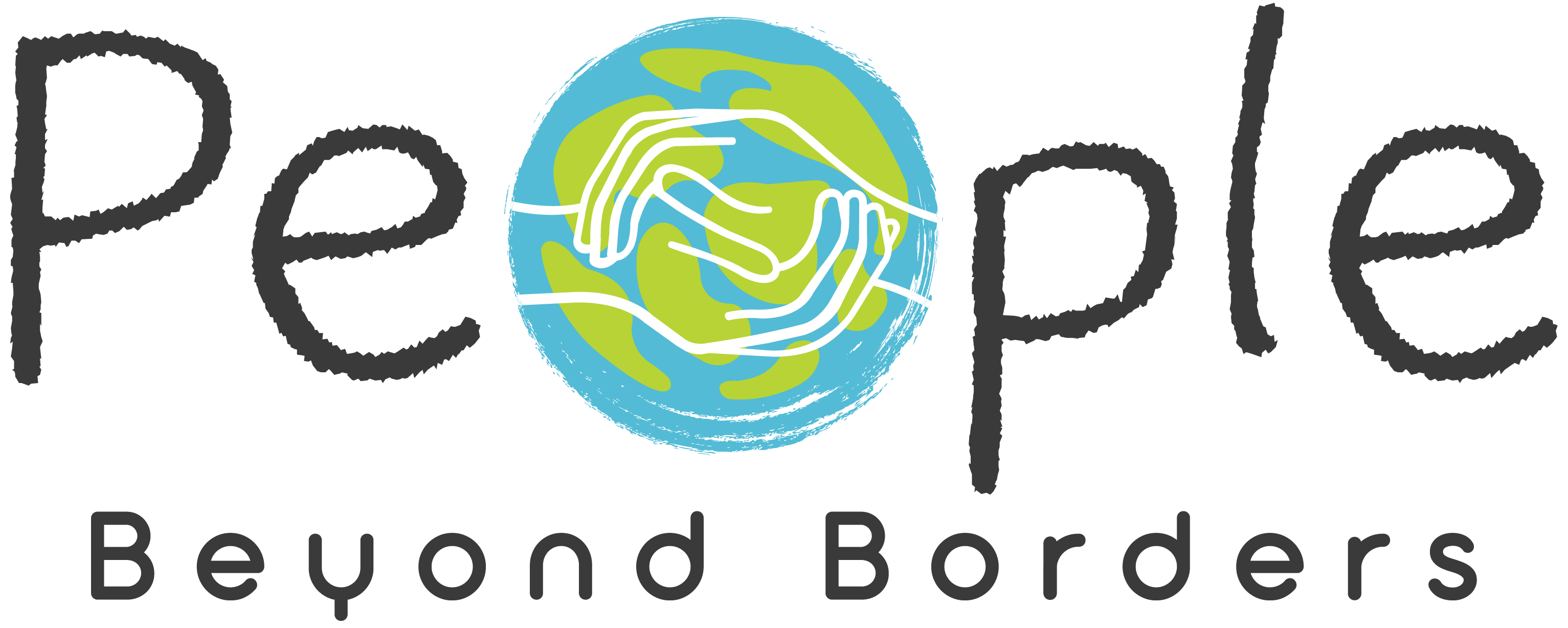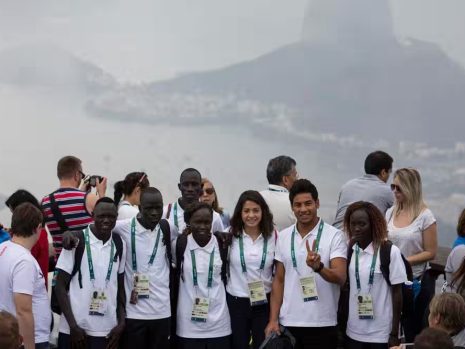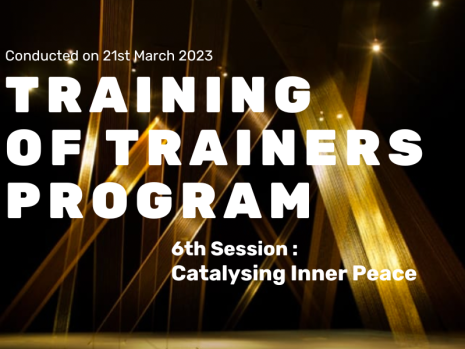PBB’s Training of Trainers, a hybrid “learn-teach- learn” co-creative program for displaced and migrant artists based in Berlin and coming from all around the world, kickstarted in February 2023. The third session was facilitated by Lauren Donnison, Founder of Hear My Voice, with expertise on Gender Justice and Education. This session kickstarted the second module of the ToT, which aims to bring practical educational, pedagogical tools as well as practical insights on project development to the participants.
Introduction – Designing a lesson as if it were a recipe
In this engaging session on 1st March 2023, Lauren walked us through the steps of lesson planning, as she shared her own experiences and reflections as an educator. We embarked with her through a culinary metaphor, comparing lesson planning to that of making a Thai Green Curry, her favorite dish. Objectives, materials, instructions, resources, tools, time, evaluations – all these elements are key to cooking the best lesson possible.

“The way that a recipe is very very detailed, is kind of the same for a lesson plan. For me, when I write my lesson plan, I kind of write it as if I was writing a recipe. [..] It’s really helpful when you think about how you’re planning your lesson and guiding yourself, but hopefully when we’re planning our lesson too it’s not only a resource that we keep for ourselves but it’s also there to share with other people as well.” – Lauren (facilitator)
Indeed, just as a recipe, the lesson plan is a step-by-step guide for a trainer and the instructions it contains can be a very helpful tool to follow through to stay anchored and feel grounded especially when one loses the thread, but it also ensures the right timing of each step when a trainer is designing their sessions.

Creating space for time
Time management is often one of the main challenges educators face, especially in their first teaching experiences. The lesson plan can be helpful in order to keep track of the time, but strictly sticking to it might also imply limiting the room for exploration, creativity and spontaneity, which are crucial elements for creating learning spaces which go beyond a functionalist or productivist understanding of education.
How to channel a discussion that channels the participants’s passion but which starts to take the group in a different direction? How to leave space for the spontaneity of the encounter, while keeping in mind the objectives of the lesson and the limited time allocated for it? A tip for time management shared by Lauren is to incorporate in your lesson plan a buffer activity: an activity that is there but which can be put aside if need be, leaving more space for collective discussions and spontaneity.
The plan, thus, shouldn’t be seen as a rigid structure, but more as a navigation tool or roadmap, adaptable to the group and flexible enough to allow for creative deviations and off-track discussions.
It is indeed important to adapt to different knowledge, interests, levels of commitment that each participant brings with themselves to the meeting, but also, as highlighted by one of the ToT participants, to take into account the personal headspace of the participants on the day of the lesson:
“From my point of view, people can be in different places on different days, and I found that I had to be very flexible to come to the person that I’m teaching, to come to the level of that person, to transfer knowledge.”- Ivona (participant artist)
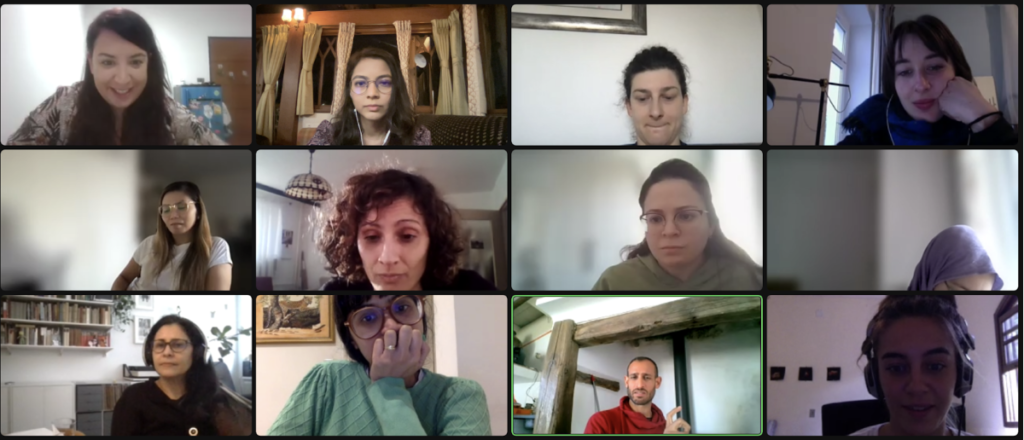
Participatory Teaching Methods – Humanising pedagogies for new educational pathways
Lauren also invited us to reflect on our own educational experience, and to identify what kind of mediums and activities were prevalent in our education. Demonstration, lecturing and reading appeared to be the most used educational tools within the group. It is however interesting to note that, also depicted in the figure she showed below, while passive teaching methods are often prevalent pedagogical tools used in educational spaces, they are also the least efficient in terms of knowledge retention.
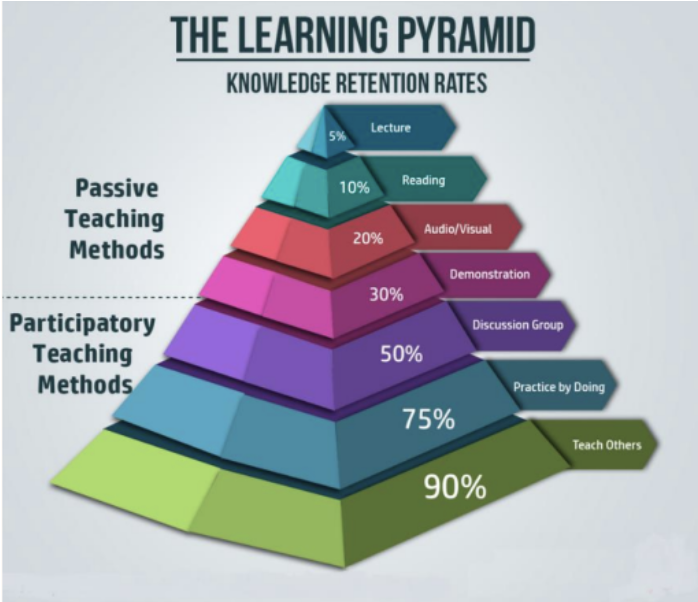
Educational pedagogies are systematically embedded in socio-political and economic structures of domination, which shape the ways in which teaching, learning and knowledge transfer happens.
The prevalence of top-down teaching methods where the students remain passive recipients of knowledge reveal – for Paolo Freire, the author of the groundbreaking book ‘pedagogy of the oppressed’ – the oppressive function of education, in which “teachers are revered as infallible and all-knowing in contrast to learners who are positioned as subordinate and passive”(Wilkins, Andrew et al. Neo-Liberalism, Pedagogy and Curriculum: A Global Perspective (Part 2) – Open Access).
As participants learning to become trainers, the group reflected in breakout rooms on what key questions would they need to ask themselves as they are preparing a participatory and interactive lesson plan. As shared by one of the participants, it is important to understand our own internal motivations and intentions before we even start our trainings:
“Why am I here, what will I get from this lesson” as a participant and as a trainer – Zeynep (participant artist)
Transforming pedagogies – Creating dialogue between the learner and the teacher
Based on the above figure, we discussed how to implement participatory teaching methods, and their effectivity:
“Discussion, practice by doing, games, like today for instance we went into discussion groups where you also talked about the different knowledge that you need, and then we put some of that into practice.” – Lauren (facilitator)
Involving the participants in teaching others is also a very powerful way to engage students or participants in the learning space, to create the room for collective and collaborative reflections, responsibility sharing as both the learner and teacher, thereby breaking the teacher-student divide.
“Also, I think it’s really important to think about not just teaching the knowledge but also teaching different perspectives. I might have understood the class completely differently from how Soraya did. So by me and her then passing back and forth what we’ve learned from the class, we might learn something different from the class, from each other.”- Lauren (facilitator)
Engaging in such mediums also allows for the recognition of the diversity of knowledge and learning practices of the participants, thereby ensuring that all participants are equally included in the learning process.
In the same manner, we discussed how to move from evaluation methods as oppressive and top-down tools towards using them as an inclusive tool to creatively engage the participants so they can collaboratively shape the lesson’s direction, set their own objectives & achievements, and open a space for discussion and feedback with the teacher.
